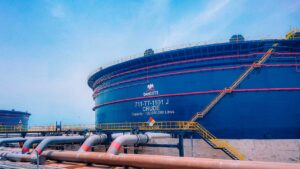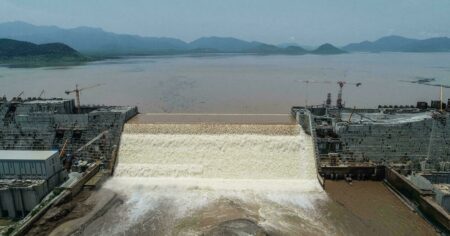- Kenya’s Nairobi Securities Exchange posted drop in capitalization in April due to investor flight.
- Other poorly performing bourses were Uganda, Mauritius, Namibia, Morocco, Tanzania, Rwanda and Tunisia.
- Zambia, South Africa, Ghana and Egypt remained positive railing Zimbabwe and Malawi.
Zimbabwe has maintained the lead in the African equity markets returns by recording the highest gains at 112.33 percent year-to-date, the latest data shows. In the period under review, Malawi recorded the highest month-on-month value of 10.96 percent.
At the same time Kenya posted the highest drops both on year-to-date and month-on-month, Nairobi Securities Exchange (NSE) monthly barometer indicates, which stood at negative 15.56 percent and minus 3.52 percent, respectively.
Other poor performers across Africa were Uganda, Mauritius, Namibia, Morocco, Tanzania, Rwanda and Tunisia. In West Africa, Nigeria performed poorly on the month-on-month index but remained positive year-to-date. Zambia, South Africa, Ghana and Egypt remained positive railing Zimbabwe and Malawi.
Kenya’s NSE, which is the leading bourse in East Africa recorded a drop in capitalisation in the wake of systained flight of investor eyeing better returns in US market.
Kenya equity markets turnover
NSE’s market capitalisation, the total market value of all outstanding shares decreased by 4.57 percent to $12.2 billion in April from $12.8 billion in March. The NSE 20 Share Index also declined by 2.66 percent to 1,578.88 recorded in April from 1,622.05 in March 2023.
“Similarly, equity turnover recorded a 86.97 percent decrease standing at $30.7 million in April from $235.4 million recorded in March 2023,” NSE notes in its barometer.
The bonds turnover also recorded a 47.17 percent decline in turnover from 70.66 posted in March 2023 to $271.4 million.
In December 2022, the African Development Bank and African Securities Exchange Association launched the African Exchanges Linkage Project (AELP), an e-platform linking African capital markets with $1.5 trillion market capitalization.
AELP enables seamless cross-border securities trading among seven African stock exchanges, representing about 2,000 companies. The platform incorporates stock market integration, an order routing system, and market and order-book data sharing.
“With AELP, we are entering a new era of African capital markets where all our members will gradually transact cross-border trades from one African securities exchange to another. This project represents a great opportunity for investors and issuers across the continent,” Edoh Kossi Amenounve, ASEA’s President, notes.
Africa equity markets eroded by investor flight
The first phase of the AELP targeted Morocco, Egypt, Nigeria, Kenya, Mauritius, South Africa. It also targeted West Africa Economic and Monetary Union, which comprises Benin, Burkina Faso, Côte d’Ivoire, Guinea-Bissau, Mali, Niger, Senegal, and Togo.
While efforts are underway to stimulate the markets, the continent’s stock markets have continued to suffer a bear run. Recent months have been characterised by major investor flight, as top dollar investors seek better returns abroad.
This comes as amid uncertainty in the emerging market stocks following a dismal performance in 2022. Institutional investors are seen to be ploughing back into the asset class, but African equity markets rarely get a look in. Investors are seeing Asia and South America as the emerging markets, giving a wide berth to Africa.
Africa boasts of three regional exchanges: the Bourse Régionale des Valeurs Mobilières (BRVM), based in Côte d’Ivoire; the East Africa Exchange, based in Rwanda; and the Bourse des Valeurs Mobilières de l’Afrique Centrale (BVMAC) in Gabon.
The MSCI Emerging Markets Index, one of the most popular global emerging market indices capturing large and mid cap representation across 24 emerging markets, lists only South Africa and Egypt in Africa. The others are Brazil, Chile, Mexico, Peru, Colombia in South America. Kuwait, Qatar, Saudi Arabia, and United Arab Emirates in the Middle East. Czech Republic, Poland, Greece, and Hungary in Europe. And Turkey, China, India, Indonesia, Korea, Malaysia, Philippines, Taiwan, Thailand across Asia.
Read also: Current state of online forex trading in Africa
Global outlook
In April, the IMF projected that global economic growth for 2023 will be to 2.8 percent, lower that the 2.9 percent forecast the multilateral lender made in January. This drop is attributable to geopolitical pressures that have continued to rise, and the Russian-Ukraine war. Equally, high debt levels, impacts of rising interest rates by various countries especially on the banking sector will hurt growth. Further, tight labor markets and underlying price pressures are expected to constrain economies.
These factors are expected to have an impact on markets and influence investor behavior. The global GDP is expected to rise modestly in 2024 recording a three per cent growth. The outlook for global inflation is positive. It is expected to decrease from 8.7 percent in 2022, to seven percent in 2023 and 4.9 percent in 2024.
Sub-Saharan Africa
Growth in Sub-Saharan Africa is expected to slow to 3.6 percent as a “big funding squeeze”, due to drying up of aid and access to private finance hits. This is the second consecutive year of an aggregate decline in SSA growth.
IMF cautions that shortage of funding may force countries to reduce fiscal resources for critical development. The lender singles out health, education, and infrastructure as industries that will be hit hard by budget cuts. With reduced spending, the region will experience delayed development to its true potential.
“Some countries, particularly those in the East African Community, or non-oil resource intensive countries, are expected to fare better but some major economies bring down the average SSA growth rate, like South Africa where growth is projected to decelerate sharply to only 0.1 per cent in 2023,” said Abebe Aemro Selassie, Director of the IMF’s African Department.
Read also: Fintech, the booming industry in Sub-Saharan Africa
Why capital markets matter in Africa
According to Financial Sector Deepening Africa, FSD Africa, the significance of developing domestic capital markets as a means of financing priority sectors and driving economic development is increasingly being acknowledged by policy makers in Africa.
For instance, the African Union (AU), Agenda 2063, prioritizes the development of capital markets. In particular, it lays emphasis on strengthening domestic resource mobilization and doubling equity markets’ contribution to development financing.
Similar support is found in several national visions including Nigeria and Rwanda (2020), Vision 2030 for Kenya and Zambia and Uganda’s vision 2040.
About $1 trillion in assets are currently held by pension, insurance and collective investment vehicles across sub-Saharan Africa.
“These funds have a serious problem finding enough investments that meet their risk and return requirements – there just isn’t enough ‘product’ for them,” Director Capital Markets, Evans Osano, says.
It means that there are projects today such as in infrastructure that are not getting financed. But this also has implications for the long-term ability of pension funds to produce adequate incomes for pensioners, notes Osano.
Does Africa need capital markets?
Capital markets provide long-term financing for priority sectors, FSD Africa notes. This, as Africa faces huge long-term financing needs for the real and social sectors.
FSD Africa (FSDA) estimates the funding gap for SMEs, infrastructure, housing is at over $300 billion per year. The World Bank estimates that Africa’s infrastructure deficit reduces per capita GDP growth by two percentage points each year. As a result, this trend is delaying the pace of poverty reduction strategies.
Equally, the Centre for Affordable Housing in Africa estimates a housing deficit of at least 25 million units in Nigeria, Kenya, Angola, Ethiopia, Cameroon and Cote d’Ivoire.
“Local currency capital markets can contribute to narrowing the financing gap across these sectors. Capital markets provide long-term funds to growing businesses, infrastructure and housing. Capital markets can also support the financing of social sectors, including health and education,” says Osano.
The markets are also key in complementing reductions in concessional funding, where about half of the countries in Sub-Sahara Africa are classified as middle income according to the World Bank.
In the last decade, 10 countries including Kenya, Nigeria, Ghana and Zambia joined this middle-income rank. This implies that these countries will gradually be weaned off the World Bank Group’s concessional lending window, International Development Association (IDA). Financing global challenges is also another role that the capital markets play.
According to the African Development Bank (AfDB), the share of Africans living in urban areas is set to rise from 36 percent in 2010 to 50 percent by 2030.
Urbanisation at this rate can cause significant stress to infrastructure, social services and proliferation of slums.
According to the United Nations Environmental Program (UNEP), Africa is projected to bear the greatest impact of climate change with the costs of adaption being estimated between five and 10 percent of GDP.
Equity markets power investment through green bonds
Capital markets can contribute to financing of climate change investments through green bonds, FSD Africa notes. They also remain instrumental in managing foreign currency and re-financing risks and diversifying the financial sector.
As a strategic response, FSDA aims to transform capital markets in Africa into a credible source of funding for the real and social sectors.
The priorities over the next five years include the bond markets for both government and non-government. Also, strategies on alternative finance, including fintech and crowd funding will be explored. Further, REITs and Islamic Finance, and equity (public and private) market development will also be tackled.
Support for non-government bonds will focus on green bonds and issues in both the real and social sectors.
“FSDA will leverage technical assistance interventions on the regulatory front with transactions support, aimed at developing a pipeline of potential issuers, and catalytic investments through development capital (DevCap),” Osano said.
FSDA also aims to build the information base around long term finance. Currently, databases are scarce and incomplete. FSDA will work closely with institutional investors to build their capacity to invest in the newer asset classes.










